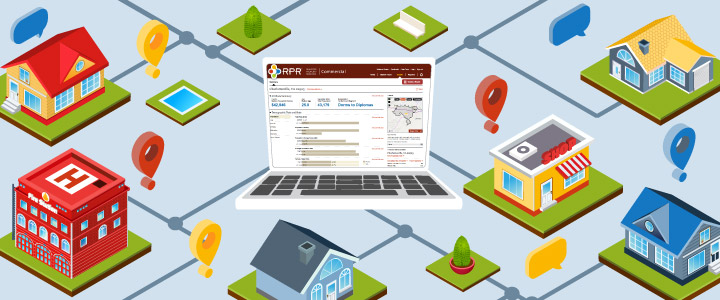You are viewing our site as an Agent, Switch Your View:
Agent | Broker Reset Filters to Default Back to ListRural Area Agents: Cover All the Bases for Residential and Commercial Clients
July 06 2015
 Hometown real estate agents are quintessential multitaskers, ready and willing to do whatever it takes to meet the needs of their rural communities. Here at Realtors Property Resource® (RPR®), we recently heard an entertaining tale of a REALTOR®, working in a one-traffic-light town, who exemplifies that "do what it takes" spirit.
Hometown real estate agents are quintessential multitaskers, ready and willing to do whatever it takes to meet the needs of their rural communities. Here at Realtors Property Resource® (RPR®), we recently heard an entertaining tale of a REALTOR®, working in a one-traffic-light town, who exemplifies that "do what it takes" spirit.
The story goes that the REALTOR® stood in the street outside a seller's home to flag down a pickup truck. Frantic to conclude the final walk through with her buyers, the agent sifted through her purse, coming up with $48 as payment to convince the driver to remove a 200-pound, 1950s wet bar from the basement of the seller's home. The unit had become a serious point of contention between buyer and seller, and the buyer refused to sign off on the walk through until the behemoth bar was removed. The driver agreed, but not until the agent and buyer helped lift the bar onto the truck, which they did, and then, happy and sweat-laden, went to closing.
Not everyone is so inclined to close a deal, but the story got us thinking about adaptability as a contributing factor in an agent's rise to success, and how that adaptableness lends itself to a rising phenomenon in real estate, one that is steadily inviting traditionally residential agents to assume a variety of roles in their own right. Insiders refer to this larger than expected group as "resimercials," although Emily Line, director of commercial services for RPR, refers to them as "hometown heroes."
"These are the folks that juggle multiple obligations in terms of servicing the diverse needs of their communities," said Line. "They are from rural areas—professionals plugged into their communities who have a vested interest in attracting small business, in addition to meeting the needs of homebuyers."
By Line's account, more than 200,000 NRDS-number-holding agents in the United States claim commercial real estate as their secondary area of business and that they tend to practice in tertiary and rural markets.
These multi-skilled community experts run the gamut in terms of their adaptability and willingness to tap into new resources. They are business advisors who know how to analyze a marketplace by determining who is buying specific consumer goods, where they work, how long they commute, what they spend and how much they make. They study locations to determine employability for a potential enterprise, what the workforce will support, and what the population will look and feel like in years to come.
Increasingly, these rural-centric agents are turning to RPR to identify marketplace opportunities for business owners, property managers and developers intent on moving into the area.
Using demographic, psychographic and spending data information, RPR's advanced analytical tools produce persuasive trade area analyses, commercial property reports, and best business reports, coupled with powerful thematic maps, that provide answers to six essential questions:
-
WHO are the right customers and/or employees for this business? The Commercial Trade Area Report compares home values, education, employment, consumer spending, income, marital status, age and population trends, and lifestyle preferences.
-
WHAT will the community support? The Best Business Report pinpoints over-and-underrepresented business types in a specific geography.
-
WHEN will this business experience its greatest growth or challenges? The Trade Area Analysis reveals what a commercial-property seeker can expect in terms of population and household growth.
-
WHERE is the best location for the client's target audience and WHY is it a good fit? The Trade Area Report helps agents and business owners match the best location with the most suitable target audience based on an analysis of spending data within a drive time, radius, or general area.
-
HOW does this location match the client's expectations? The Property Report, a foundational first step, provides data on property type, lot size, maps, high res photos, owner information, assessed values and more.
Learn more about how to measure, predict and target the perfect spot for commercial endeavors by visiting narrpr.com/commercial.
To view the original article, visit the RPR blog.









